Abstract
Sunflower (Helianthus annuus L. cv Asmer) and maize (Zea mays L. cv Eta) plants were grown under controlled environmental conditions with a nutrient solution containing 0, 0.5, or 10 millimolar inorganic phosphate. Phosphate-deficient leaves had lower photosynthetic rates at ambient and saturating CO2 and much smaller carboxylation efficiencies than those of plants grown with ample phosphate. In addition, phosphate-deficient leaves contained smaller quantities of total soluble proteins and ribulose-1,5-bisphosphate carboxylase/oxygenase (Rubisco) per unit area, although the relative proportions of these components remained unchanged. The specific activity of Rubisco (estimated in the crude extracts of leaves) was significantly reduced by phosphate deficiency in sunflower but not in maize. Thus, there was a strong dependence of carboxylation efficiency and CO2-saturated photosynthetic rate on Rubisco activity only in sunflower. Phosphate deficiency decreased the 3-phosphoglycerate and ribulose-1,5-bisphosphate (RuBP) contents of the leaf in both species. The ratio of 3-phosphoglycerate to RuBP decreased in sunflower but increased in maize with phosphate deficiency. The calculated concentrations of RuBP and RuBP-binding sites in the chloroplast stroma decreased markedly with phosphate deficiency. The ratio of the stromal concentration of RuBP to that of RuBP-binding sites decreased in sunflower but was not affected in maize with phosphate deficiency. We suggest that a decrease in this ratio made the RuBP-binding sites more vulnerable to blockage or inactivation by tight-binding metabolites/inhibitors, causing a decrease in the initial specific activity of Rubisco in the crude extract from phosphate-deficient sunflower leaves. However, the decrease in Rubisco specific activity was much less than the decrease in the RuBP content in the leaf and its concentration in the stroma. A large ratio of RuBP to RuBP-binding sites may have maintained the Rubisco-specific activity in phosphate-deficient maize leaves. We conclude that the effect of phosphate deficiency is more on RuBP regeneration than on Rubisco activity in both sunflower and maize.
Full text
PDF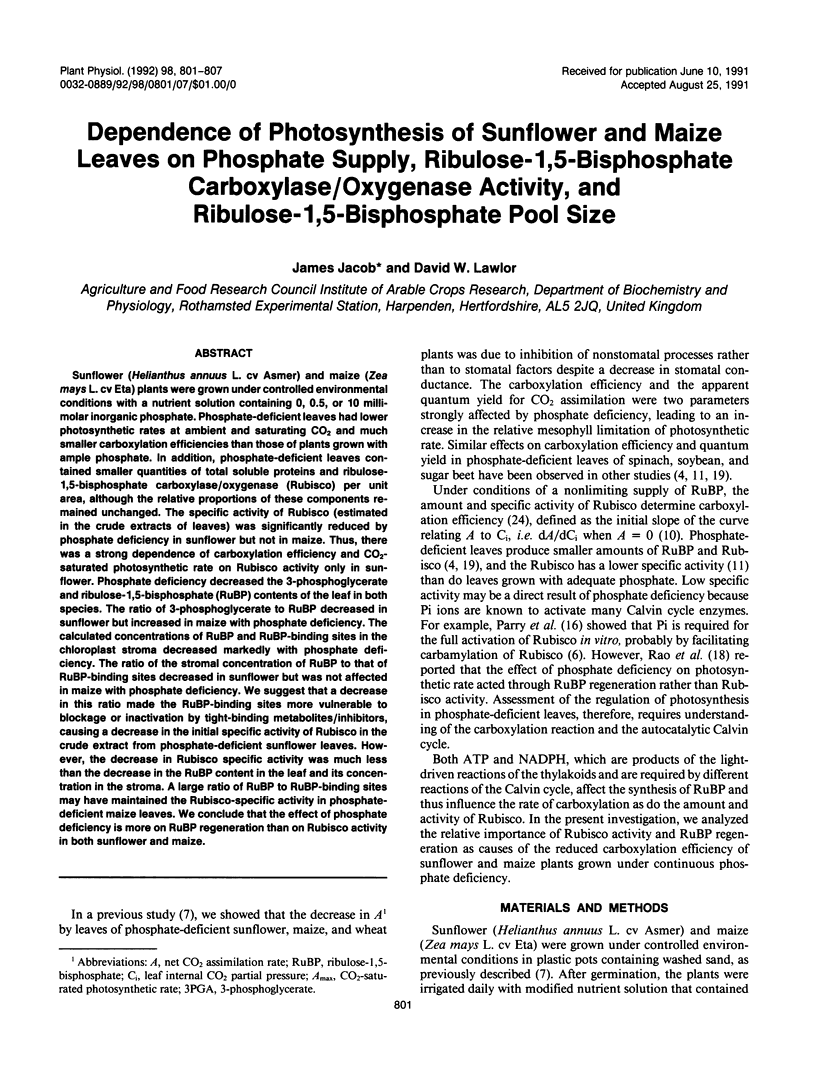
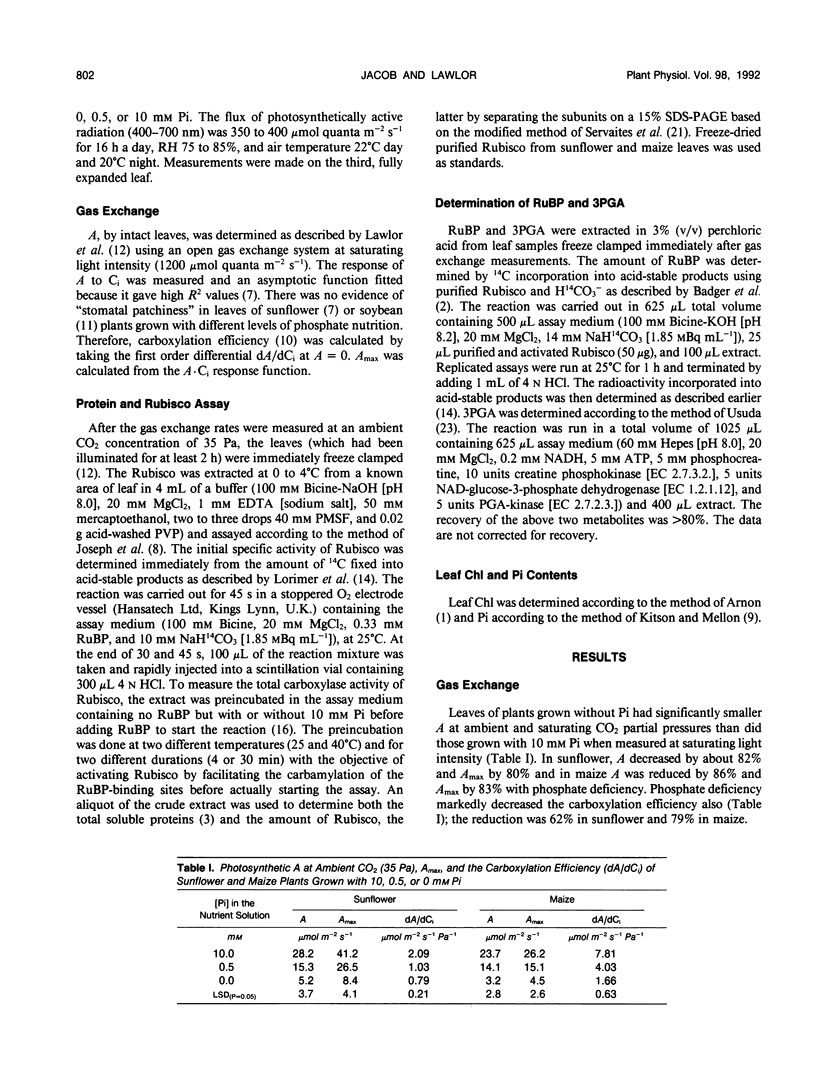
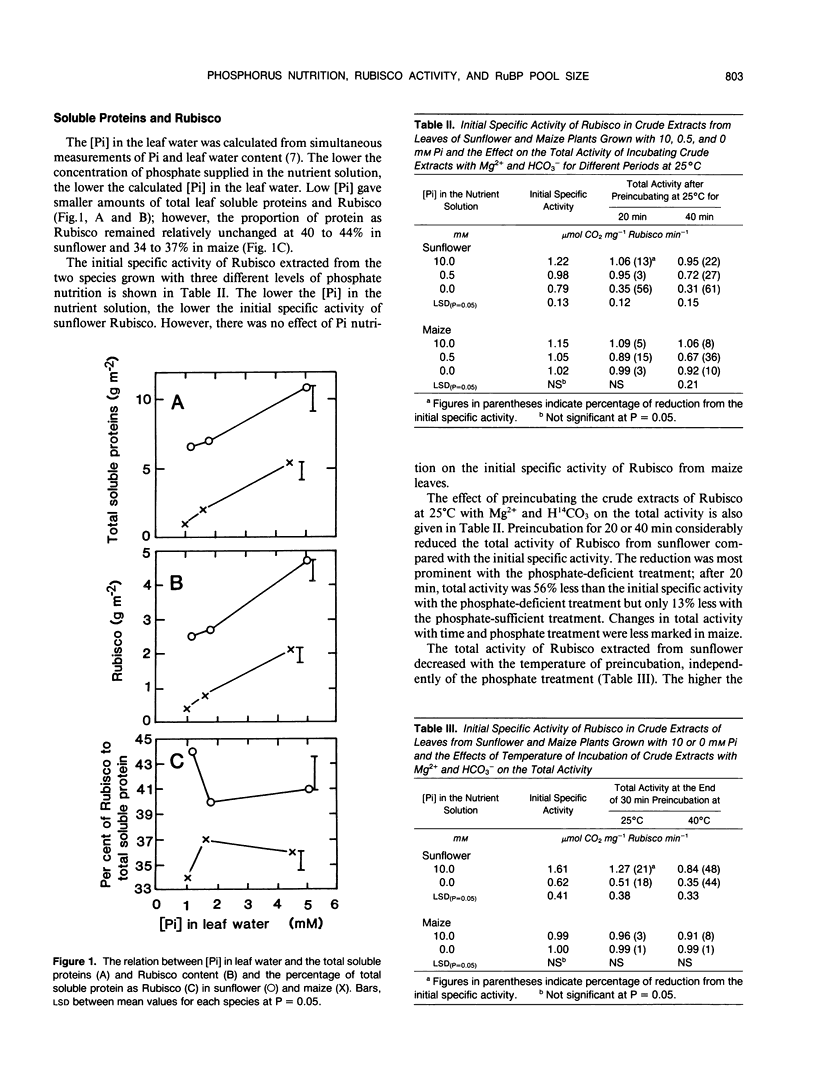
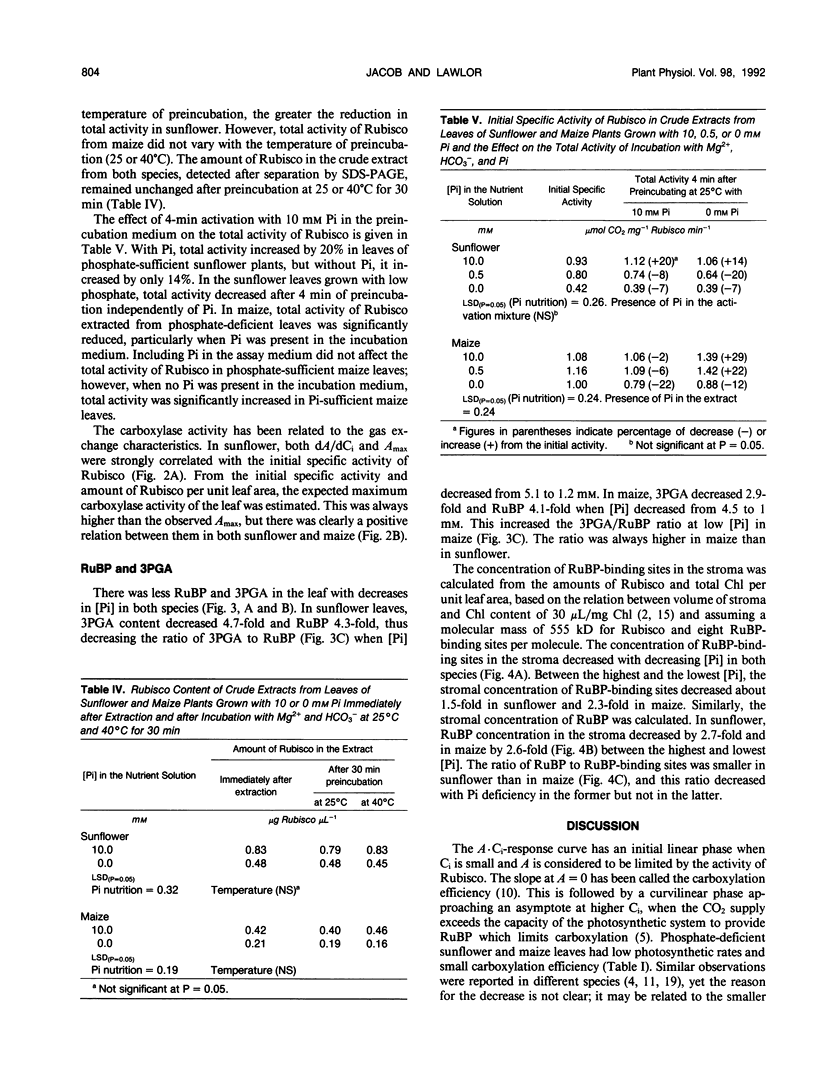
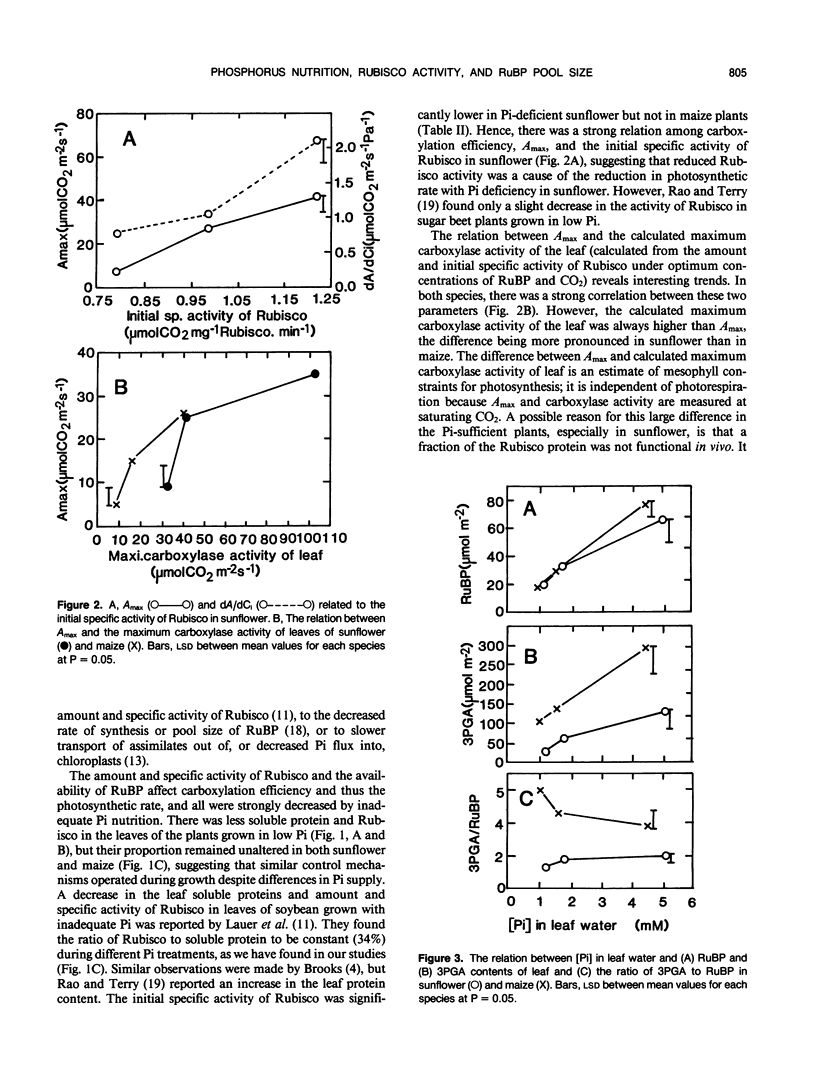
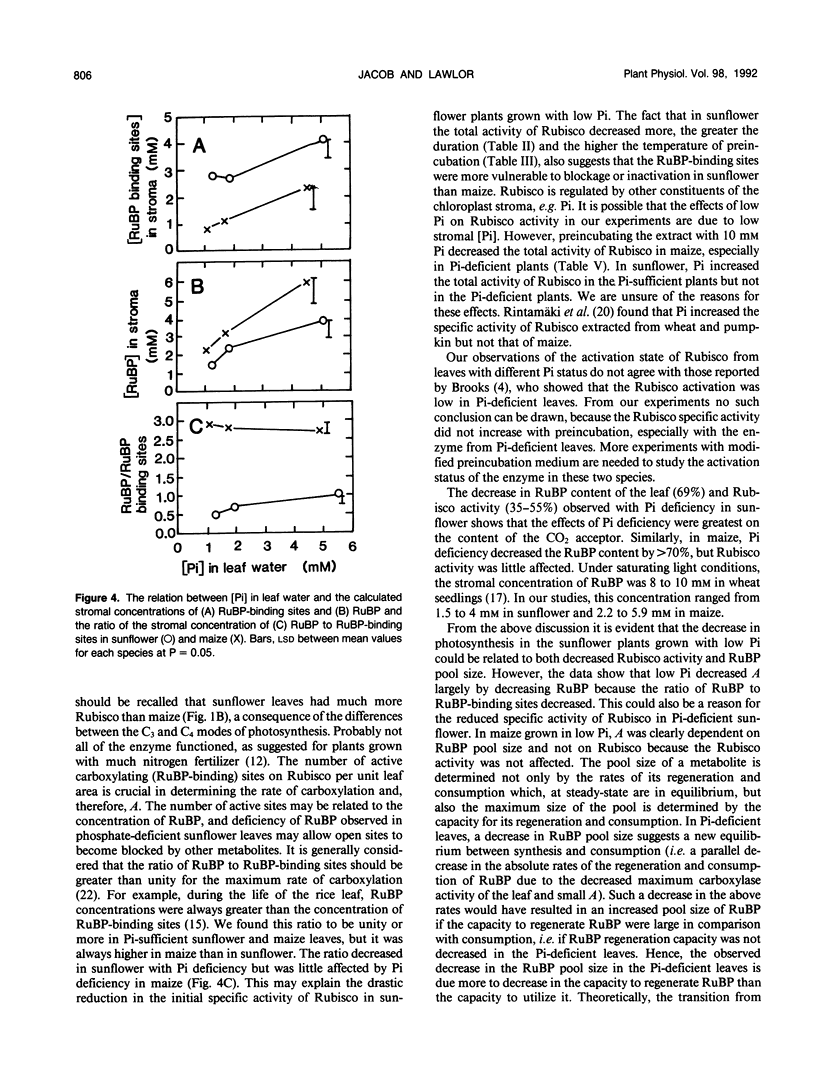
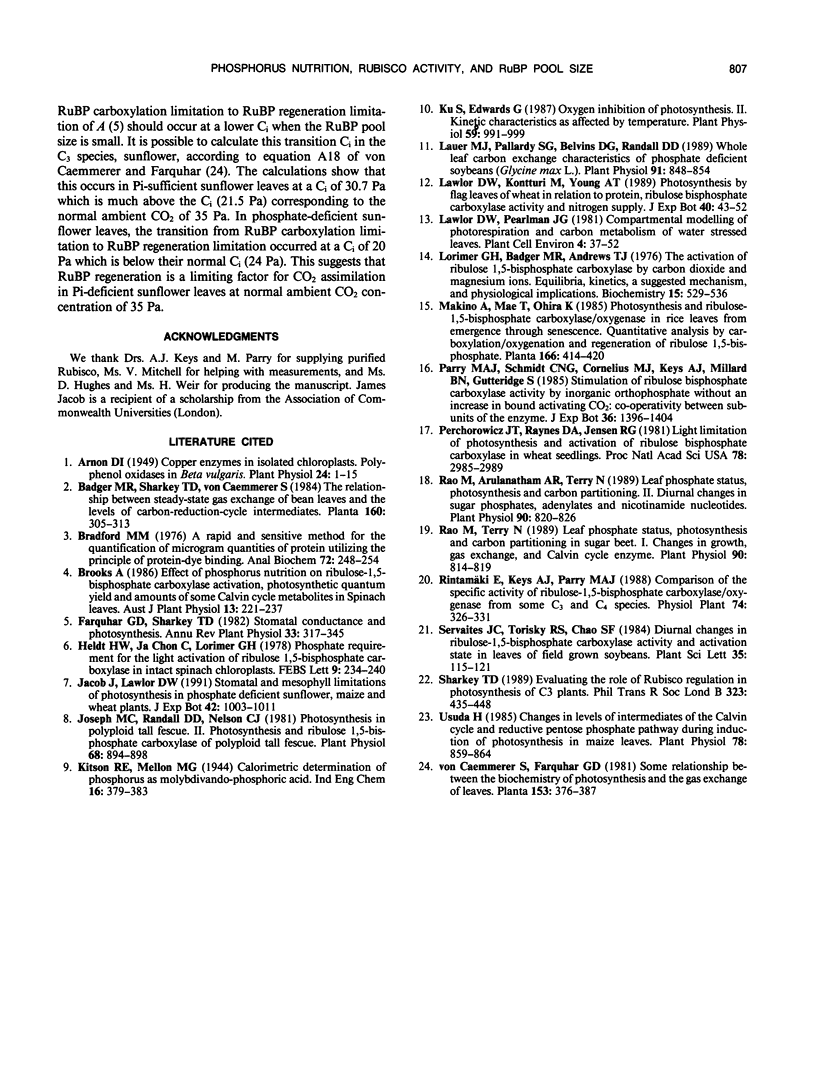
Selected References
These references are in PubMed. This may not be the complete list of references from this article.
- Arnon D. I. COPPER ENZYMES IN ISOLATED CHLOROPLASTS. POLYPHENOLOXIDASE IN BETA VULGARIS. Plant Physiol. 1949 Jan;24(1):1–15. doi: 10.1104/pp.24.1.1. [DOI] [PMC free article] [PubMed] [Google Scholar]
- Bradford M. M. A rapid and sensitive method for the quantitation of microgram quantities of protein utilizing the principle of protein-dye binding. Anal Biochem. 1976 May 7;72:248–254. doi: 10.1016/0003-2697(76)90527-3. [DOI] [PubMed] [Google Scholar]
- Joseph M. C., Randall D. D. Photosynthesis in Polyploid Tall Fescue : II. PHOTOSYNTHESIS AND RIBULOSE-1, 5-BISPHOSPHATE CARBOXYLASE OF POLYPLOID TALL FESCUE. Plant Physiol. 1981 Oct;68(4):894–898. doi: 10.1104/pp.68.4.894. [DOI] [PMC free article] [PubMed] [Google Scholar]
- Lauer M. J., Pallardy S. G., Blevins D. G., Randall D. D. Whole Leaf Carbon Exchange Characteristics of Phosphate Deficient Soybeans (Glycine max L.). Plant Physiol. 1989 Nov;91(3):848–854. doi: 10.1104/pp.91.3.848. [DOI] [PMC free article] [PubMed] [Google Scholar]
- Lorimer G. H., Badger M. R., Andrews T. J. The activation of ribulose-1,5-bisphosphate carboxylase by carbon dioxide and magnesium ions. Equilibria, kinetics, a suggested mechanism, and physiological implications. Biochemistry. 1976 Feb 10;15(3):529–536. doi: 10.1021/bi00648a012. [DOI] [PubMed] [Google Scholar]
- Perchorowicz J. T., Raynes D. A., Jensen R. G. Light limitation of photosynthesis and activation of ribulose bisphosphate carboxylase in wheat seedlings. Proc Natl Acad Sci U S A. 1981 May;78(5):2985–2989. doi: 10.1073/pnas.78.5.2985. [DOI] [PMC free article] [PubMed] [Google Scholar]
- Rao I. M., Arulanantham A. R., Terry N. Leaf Phosphate Status, Photosynthesis and Carbon Partitioning in Sugar Beet: II. Diurnal Changes in Sugar Phosphates, Adenylates, and Nicotinamide Nucleotides. Plant Physiol. 1989 Jul;90(3):820–826. doi: 10.1104/pp.90.3.820. [DOI] [PMC free article] [PubMed] [Google Scholar]
- Rao I. M., Terry N. Leaf phosphate status, photosynthesis, and carbon partitioning in sugar beet: I. Changes in growth, gas exchange, and calvin cycle enzymes. Plant Physiol. 1989 Jul;90(3):814–819. doi: 10.1104/pp.90.3.814. [DOI] [PMC free article] [PubMed] [Google Scholar]
- Usuda H. Changes in Levels of Intermediates of the C(4) Cycle and Reductive Pentose Phosphate Pathway during Induction of Photosynthesis in Maize Leaves. Plant Physiol. 1985 Aug;78(4):859–864. doi: 10.1104/pp.78.4.859. [DOI] [PMC free article] [PubMed] [Google Scholar]


